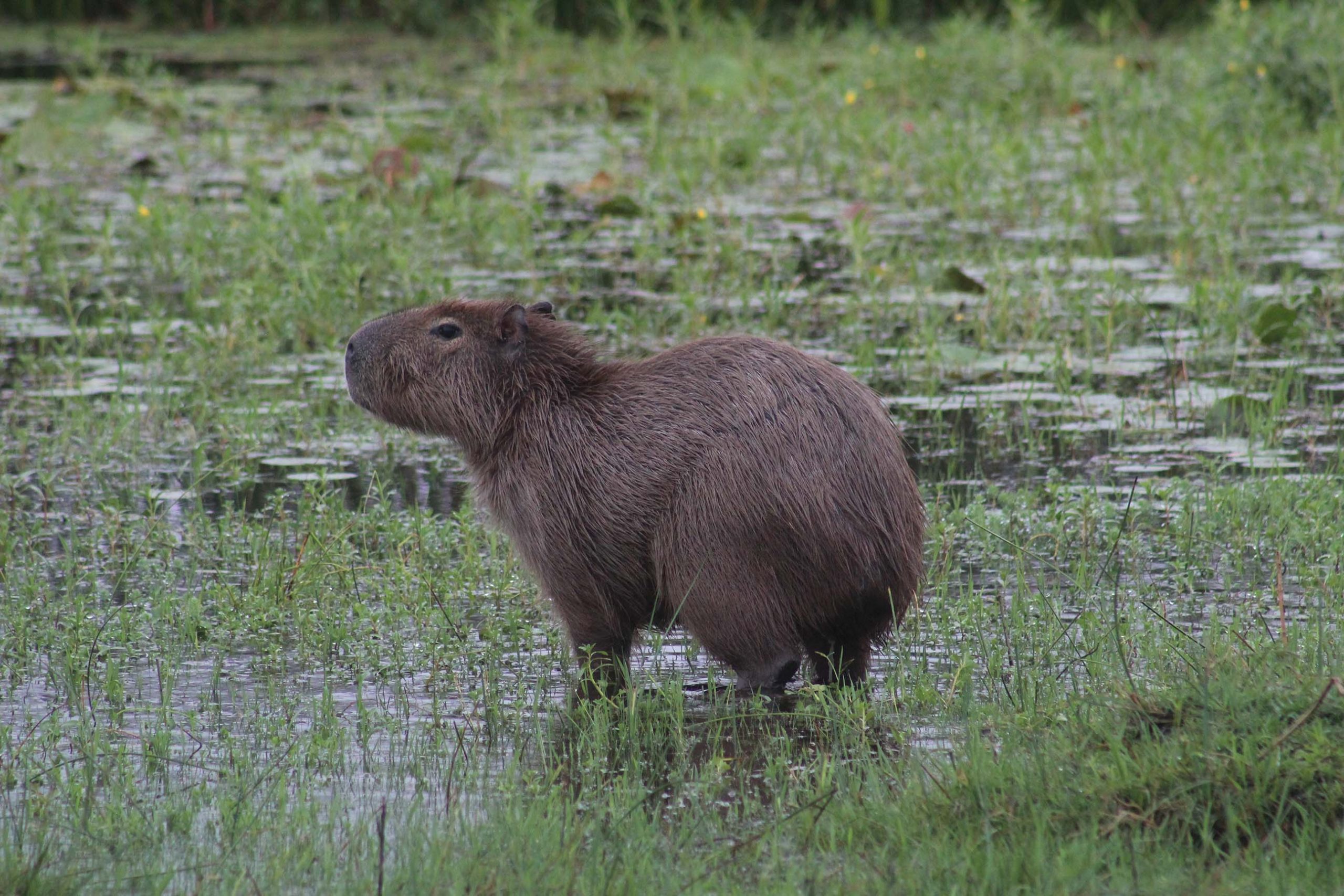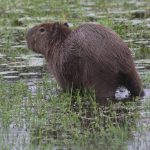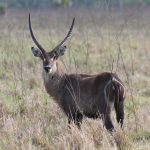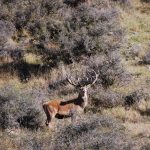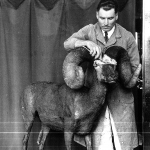Capybara, agouti, and paca are unusual trophies and excellent table fare.
The Independence Gun Club (IGC) Sporting Heritage Center is in the middle of downtown Independence, Kansas. The first floor now houses all my taxidermy, which is kind of fun. It’s even more fun when kids come through. Back on a shelf on the far south wall is one of my favorite mounts. Most youngsters notice it, too, and I’m surprised how many of them know what it is.
Giant guinea pig would be more apt, but it’s a capybara, largest rodent in the world. The books say it can weigh up to 150 pounds. Mine isn’t quite that big, but it’s a blocky, stocky, impressive animal. Although it’s a herbivore and essentially harmless, its teeth are impressive, too. A distinctive characteristic of rodents is two pairs of incisors, top and bottom, that continue to grow throughout the animal’s life.
The capybara, Hydrochoerus hydrochaeris, is a semi-aquatic rodent, typically living in packs or colonies along South American watercourses. They are found in every South American country except Chile, but are most common in the vast Amazon Basin, from northern Argentina northward. There is a subspecies, the slightly smaller lesser capybara to the northwest, clear up to Panama, but capybaras do not occur naturally north of the Canal.
My first experience with the giant rat was while hunting with dogs along a small river system in northern Argentina’s Santa Fe Province. I’d seen the weird, splayed-toe tracks. Five toes on the front foot, three on the rear. You can’t miss that track! Otherwise, I hadn’t a clue what to expect.
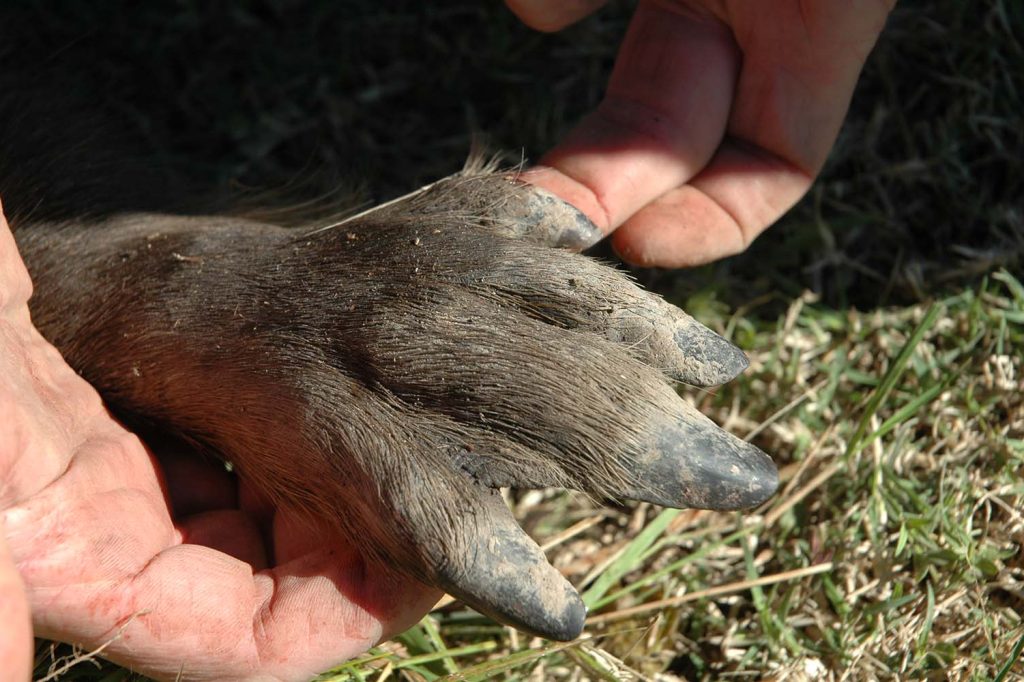
At dawn, outfitter Marcelo Sodiro and I hiked along a narrow plain, swampy watercourse to our left, thick bush off to the right. Occasional yips told us the dogs were in the bush, hoping to catch animals out feeding, or working their way back toward the river.
We strolled along for maybe a half-hour as full daylight came. Then the pack lit up with raucous hound music, and Marcelo started running, leaving me little choice but to run with him. Okay, I get it. A capybara will try to lose the dogs by escaping to its water sanctuary. Our job was to get ahead and try to intercept. We dashed along a trail just up from the water’s edge, keeping the dogs to our right. After a mad dash, the baying turned toward us. Marcelo pulled up short in a small clearing, told me to get ready. In a few seconds a brown form streaked across our front, right to left, headed for the water.
As we left the truck, Marcelo had offered me a double-barreled shotgun with buckshot, but I’d kept my Todd Ramirez 7×57 which, fortunately, fits me like a good shotgun. The dogs all had white spots, highly visible. They were a dozen yards behind, safe, but closing fast.
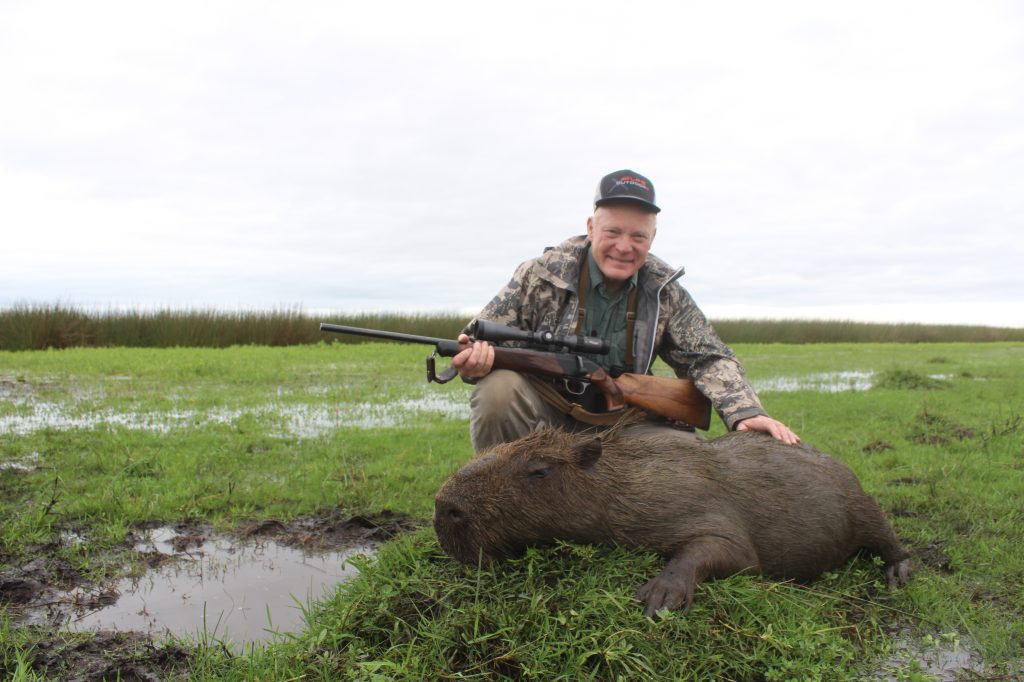
It was a single capybara, looked like a good-sized one. I swung with it, got the shot off, and the dogs piled in. It all happened fast, very exciting. Toward the end of the hunt, Marcelo and I did this again. Next time, I accepted the shotgun!
Capybara meat is white and mild, much like pork, and is highly prized. So is the leather. Strong, durable, attractively pebble-grained, and essentially waterproof. The leather is called carpincho from the Portuguese. Just about every shop in Buenos Aires, and I suppose in Brazil, sells carpincho items: Footwear, jackets, belts, purses. Cool stuff. Yes, capybaras are farmed, both for meat and leather.
A decade later, in 2019, I would have one more experience hunting capybara, this one quite different. I was again hunting with Marcelo Sodiro, but up in Entre Rios Province, primarily looking for free-range axis deer. We were near the Parana River, a big river. Lots of small channels and marshes. Perfect capybara habitat, and there were lots of them. This was the only time I was able to observe packs.
Hunting was by stalking carefully along the edges of marshes, looking for a big one. In a group, you can compare them but, when standing apart, there’s little to compare. One thing I learned that I didn’t know: It is possible to determine a mature male. Only the males have an odd, elongated oval bump on the snout. Subtle, but if you can get close enough to look carefully, it’s there. We looked at quite a few, shot the one that looked the biggest, but who knows? Wonderful experience to see so many, and I got some great photos.
The primary hunting opportunity for capybara is in northern Argentina. However, there’s an unfortunate wrinkle. Argentina no longer allows the export of any native big-game species, so it’s difficult to add this unusual animal to a taxidermy collection. I’m glad I had the sense to have one done life-size when I still could.
Although not nearly so large, the Americas have two more large rodents ranging from southern Mexico southward: the agouti and the paca. There are actually eleven species of agoutis, genus Dasyprocta, in Central and South America, varying primarily in color. Agoutis weigh up to about 13 pounds so, on the rodent scale, not as large as a big woodchuck.
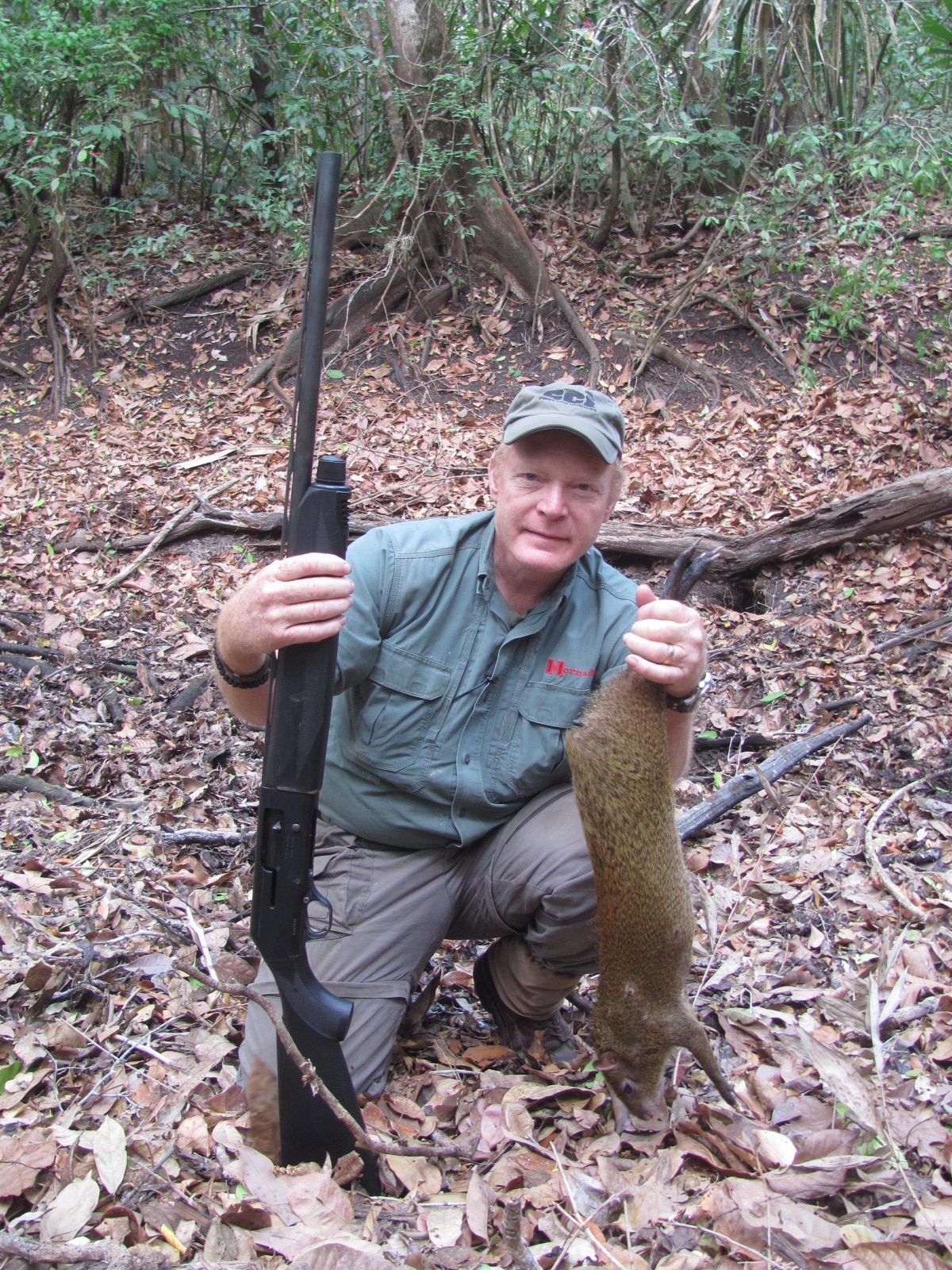
They are diurnal, often seen and on license in Mexico’s Yucatan. When sitting on a machan for brocket deer (or whatever), it’s not unusual to hear faint scrabbling in the leaves and see two or three agoutis scampering along.
Like everything else in the jungle, the local hunters consider agoutis table fare. They’re not bad at all, but paca is the best of the best. Weighing up to 30 pounds, the paca, Cuniculus paca, is probably the third-largest rodent, after capybara and beaver. Body shape is much like a capybara, so like an overgrown guinea pig, but the paca has a thin, fragile skin patterned with white spots and stripes. Of all the jungle game, the paca is the great delicacy, with very white meat, mild and flavorful.
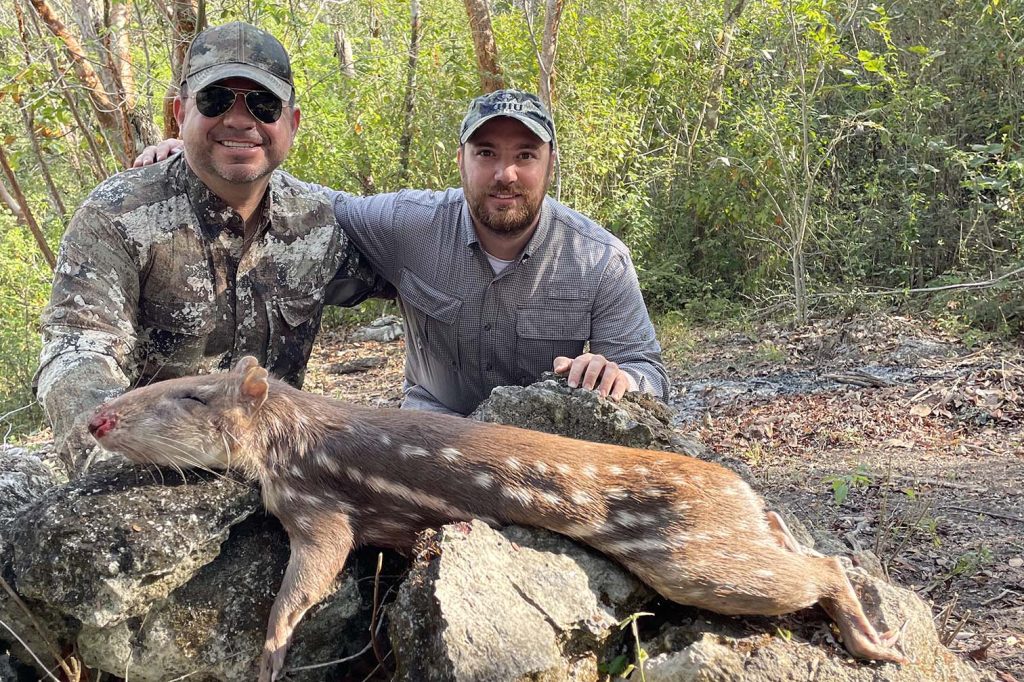
I used to think of the paca as strictly a Central and South American animal, so I was totally surprised when I learned that they are widely distributed in Mexico’s Yucatan, so they are also a North American animal. The paca is readily on license in southern Mexico. However, and maybe this is good for the pacas (because the locals love to eat them), this nocturnal, burrowing animal is exceptionally difficult to hunt.
Typically, they burrow in caves in small colonies, coming out at night to forage. Finding tracks (and, today, using trail cams), hunters find an occupied burrow, then set up in the late afternoon and hope they venture out just at last light. That’s how I got my paca several years ago, on one of my several failed attempts for a red brocket. Last year, that’s how hunting partner Sergio Alcazar got his paca.
Otherwise, there’s always blind luck, but it’s always better to be lucky than good. Ten years ago, I shared camp with a guy who shot a paca along the jeep trail on his way back to camp, just at sundown. We came down the trail just behind them, and I took photos in good light.
This year, I was in camp in Yucatan with hunter Michael Murphy. His story is even more unusual: Last year, hunting with Mario Canales, Murphy’s local guide found a paca and Murphy shot it at midday.
The Yucatan jungle is an amazing place, and nobody knows it like the local hunters. However, and whenever, it’s a happy camp when a paca is brought in. The meat is truly excellent; you’ll eat well for a couple of days.


